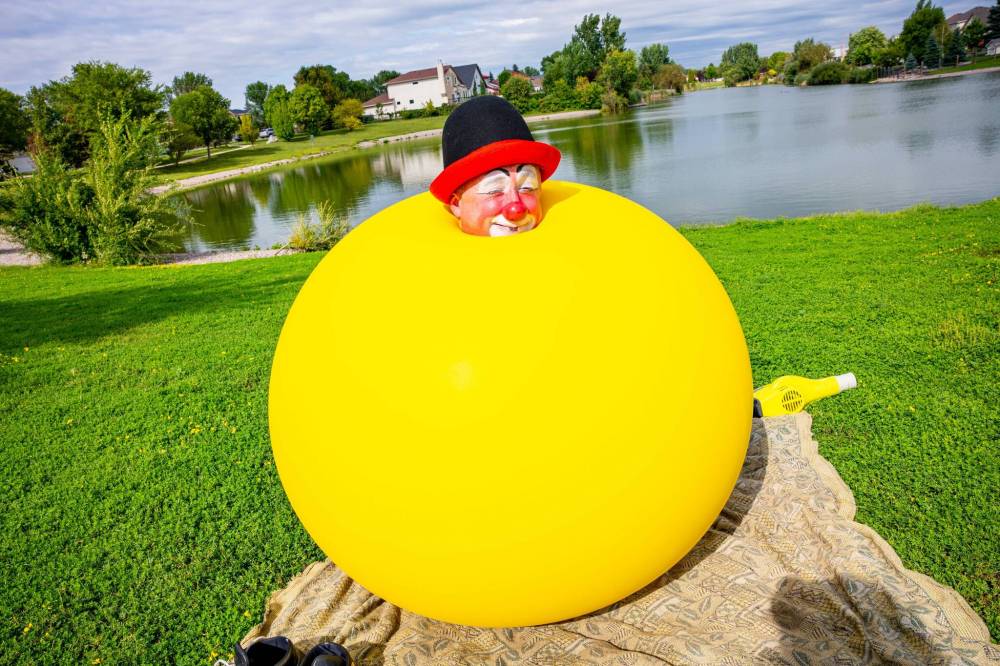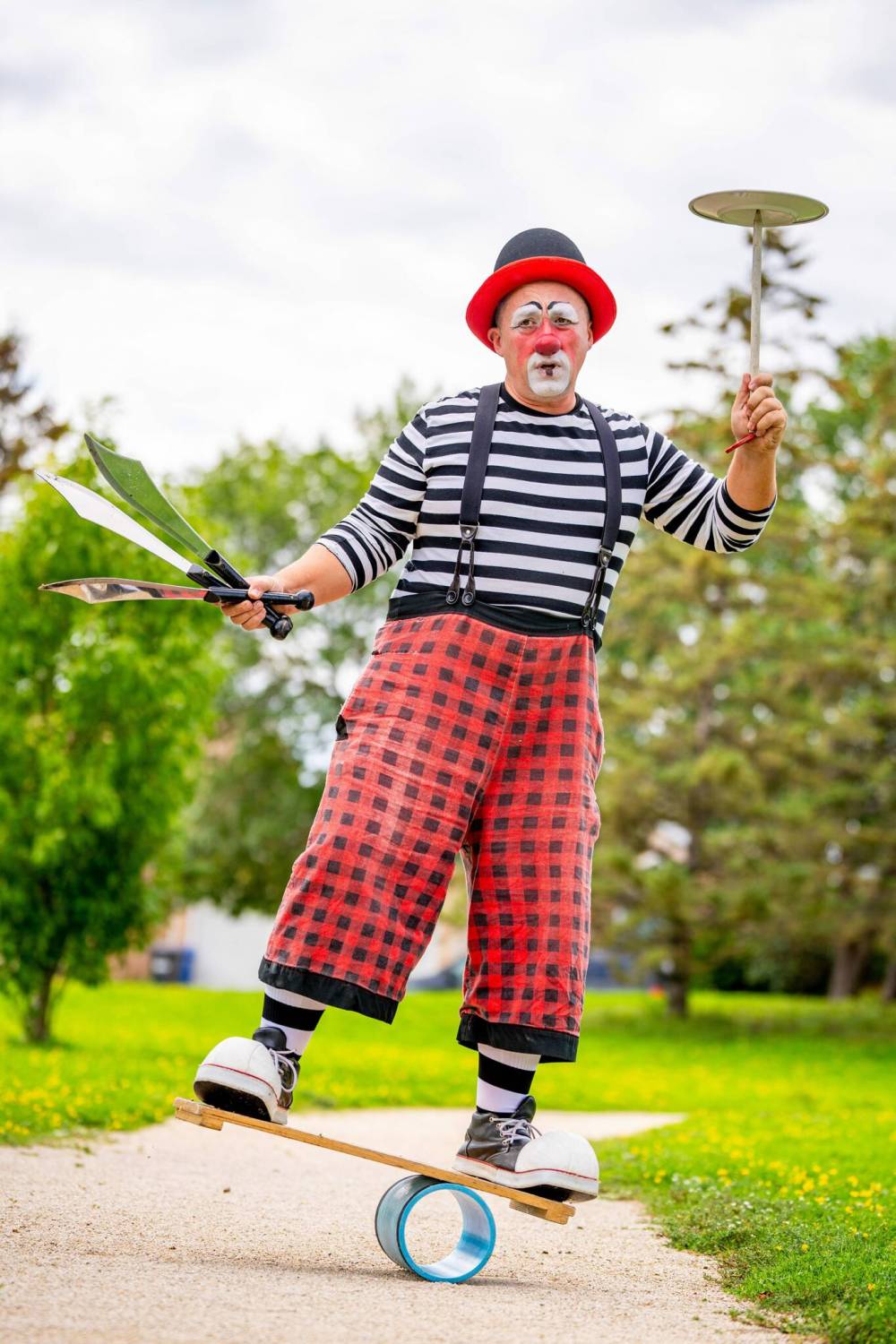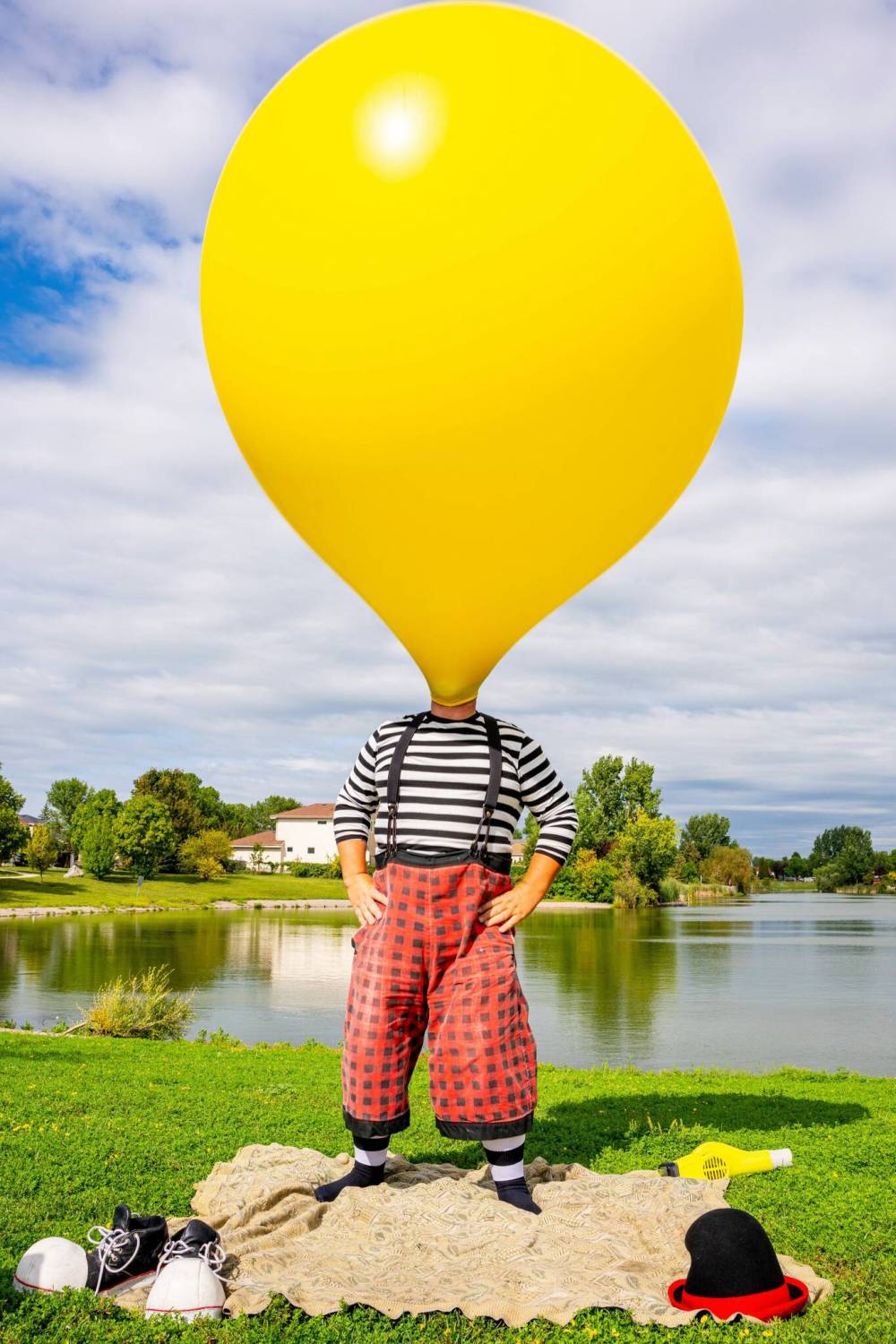30 years of clowning around Going behind the makeup with longtime entertainer
Read this article for free:
or
Already have an account? Log in here »
To continue reading, please subscribe:
Monthly Digital Subscription
$0 for the first 4 weeks*
- Enjoy unlimited reading on winnipegfreepress.com
- Read the E-Edition, our digital replica newspaper
- Access News Break, our award-winning app
- Play interactive puzzles
*No charge for 4 weeks then price increases to the regular rate of $19.00 plus GST every four weeks. Offer available to new and qualified returning subscribers only. Cancel any time.
Monthly Digital Subscription
$4.75/week*
- Enjoy unlimited reading on winnipegfreepress.com
- Read the E-Edition, our digital replica newspaper
- Access News Break, our award-winning app
- Play interactive puzzles
*Billed as $19 plus GST every four weeks. Cancel any time.
To continue reading, please subscribe:
Add Free Press access to your Brandon Sun subscription for only an additional
$1 for the first 4 weeks*
*Your next subscription payment will increase by $1.00 and you will be charged $16.99 plus GST for four weeks. After four weeks, your payment will increase to $23.99 plus GST every four weeks.
Read unlimited articles for free today:
or
Already have an account? Log in here »
Hey there, time traveller!
This article was published 03/09/2024 (465 days ago), so information in it may no longer be current.
Charles Lauder, a.k.a. Sleepy the Clown, was at church camp when he met his first clown: a minister dressed as a jester, brandishing a Bible and preaching the gospel to a gaggle of Christian teenagers. The pastor’s act left an indelible impression on the youngster; while Lauder, 45, is no longer a practising Christian, this summer marks his 30th season clowning around.
A clown is supposed to be …
… someone who tries really hard to do something but fails.
NIC ADAM / FREE PRESS 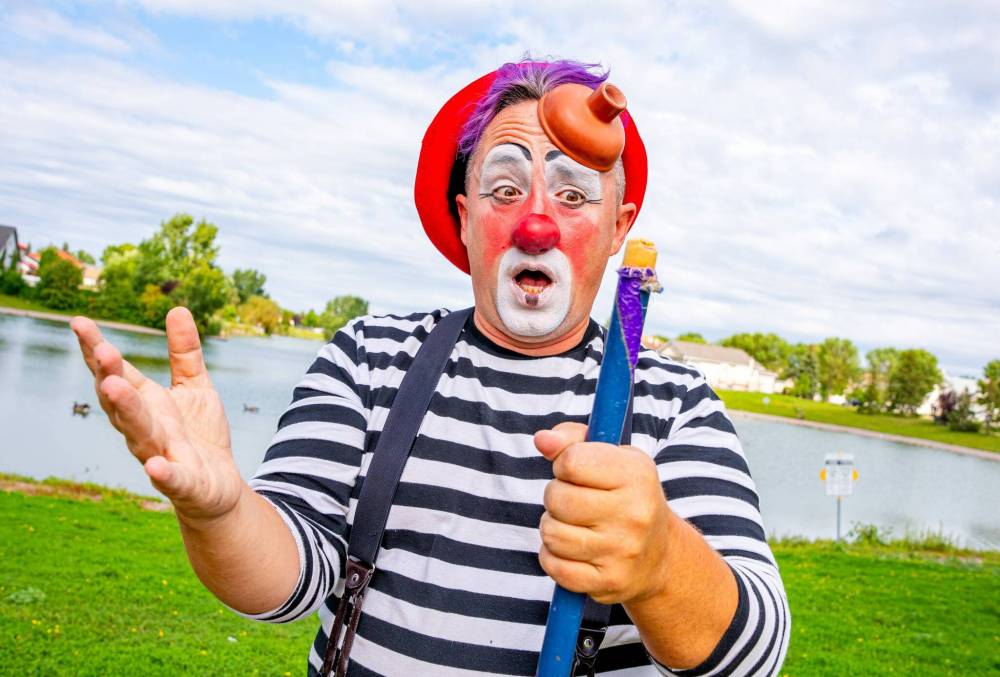
Sleepy the Clown is an exaggeration of Charles Lauder …
… I like to say, “I am Sleepy now, but I am going to be tired when the show is done.”
Clowning at its most simple and its most difficult …
… is about being vulnerable. Being open to what is happening around you and what is happening with the audience.
A clown is an exaggeration of the human condition …
… It’s everything that a person is just blown up to the nth degree. I have had a lot of thoughts about this recently. If we are going to get philosophical, it is going to get surprisingly deep, which is fine.
Your job as a clown is to be interested, not interesting …
… if you are interested in what you are doing, your audience will come with you on the ride. If you are not interested in what you are doing and you are just trying to be interesting, people can smell the falsehood.
NIC ADAM / FREE PRESS 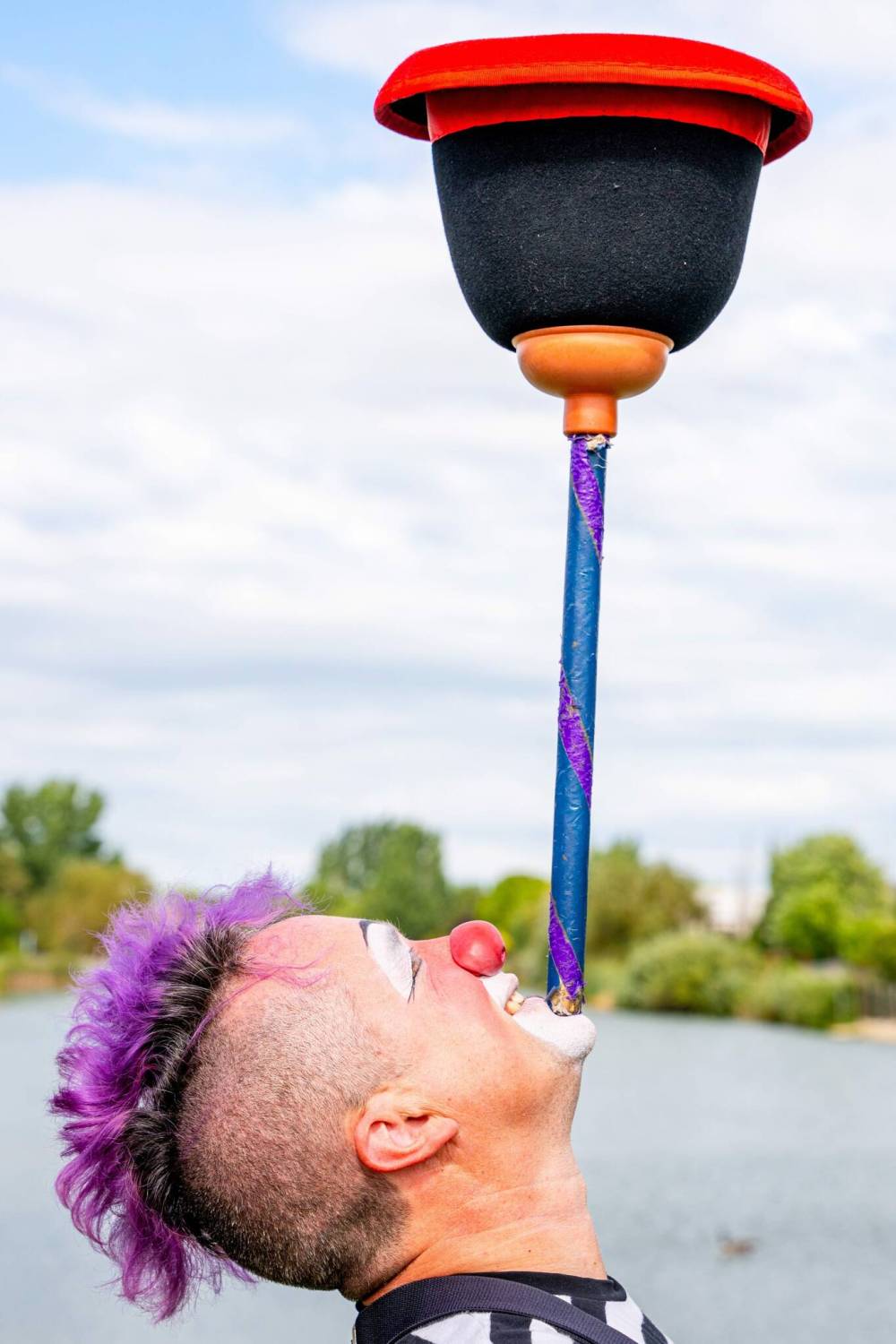
I am an independent clown …
… I like to say I am a birthday clown who dreams of being in the circus.
I can do magic, I juggle the things, I make full-size people out of balloons …
… mostly I have fun doing goofy stuff.
People make assumptions about me based on what I do for a living …
… you say “clown” and people automatically dismiss you as a children’s entertainer, not realizing what you can do and how entertaining you can be for a wider, bigger audience.
I perform for everybody …
… I do fairs and festivals, I do stage shows, I do adults and children [shows]. I try to entertain everyone.
Clowning is an invitation to play …
… if your audience doesn’t want to play, it is hard to make them do it. If your audience is happy to play, then it doesn’t matter how old they are. People who don’t care are the hardest to entertain.
NIC ADAM / FREE PRESS 
I am my clown and my clown is me …
… it’s the same person. It’s still me. This is who I am. I get recognized whether I have this makeup on or not.
What began as a mask …
… has become a licence for me to be. To let my full self be open and vulnerable to the audience around me.
My first experience with an actual clown was at Bible camp …
… I met a clown minister when I was 15 and that was when everything clicked into place — what a clown could be and what a clown could do. That is what started me on this journey. It changed my preconceived idea of what a clown is.
Everything is simple and everything is profound …
… clowning is simple and hard at the same time.
One of the problems with learning to be a clown is that you have to do it as you learn it …
… it’s hard to practise all this audience interaction without an audience. My first ever performance was pretty bad. I was 16.
Lauder says there are assumptions that clowning is for children, but the art form is actually for all ages to enjoy.
A clown can be anything …
… that is one of the things I love the most about clowns. Magicians have to be magicians, jugglers have to be jugglers, acrobats have to be acrobats, but clowns can do anything and all things — although typically not well.
There are a few main thoughts that separate clowning as an art form from other theatre …
… one is breaking the fourth wall. There is no fourth wall; they are all open. In most clowning you are interacting with the audience. There is that connection with the audience and, since there is that connection, if something happens with the audience, you acknowledge it and do something with it.
Clowning for me started off as a mask, an instant character …
… I put on this makeup and people in the audience automatically know who I am, what I am going to do and what is about to happen. But it has evolved from there.
The makeup, the nose, the costume …
… has now morphed into a permission. It is permission for strangers to approach me in a park or at a fair or a festival. The nose is permission, so they know they are allowed to come see me. That it is a safe thing to do.
The makeup does not set clowning apart from other forms of performance art …
… the makeup is not required, even though we think it is.
The juggling, the magic show, the balloon tricks …
… those are the hard skills. It’s easier to sell hard skills. But the soft skills are more important.
Lauder says clowning is a much more nuanced art form than the stereotypical American Traditional circus clown.
Soft skills like the patter, the performance, the interactions …
… are harder to define and way harder to teach, but more important in the end, because that is what is more memorable. That is what makes the connections.
It’s not what you are doing that matters, it’s how you are doing it …
… the work, the balloons, the juggling, the magic tricks, that is all sort of the sideline. The primary focus is being the clown and being in that position to make that connection with your audience.
In Canada when we think of a clown …
… we think of a specific circus clown known as American Traditional; they are always happy. They are there to make you laugh.
But you don’t have to be inherently funny to be a clown …
… there is a large argument about that, because it feeds into the larger question of, “What is a clown”? There is such a variety in clowning, if you pigeonhole yourself into just one kind, you are closing the door on all these other opportunities.
There are theatrical clowns …
… there’s fringe theatre clowns, there’s burlesque clowns … these are all very different mediums, very different art forms.
Lauder attests that being a successful clown is all about being vulnerable with the audience.
The thing that connects them all is the clowning …
… which is the emotional connection with the audience.
If I am going to be open and honest and vulnerable onstage …
… then I have to try to be all the time, and it has improved my life. I like to think it helps with relationships. I fully admit I don’t do it all the time, because I can’t. It’s simple in concept but difficult in execution; it’s stuff that takes work. All this stuff — being open honest and vulnerable — takes work.
I have learned that people are uptight …
… I learned that everyone has a better day when they take the time to play. A lot about clowning is about being open to the possibilities of play.
We as adults often forget how to play like we did when we were kids …
… but it is a powerful tool for mental health. Being able to play for a moment with friends or family or even strangers is important.
av.kitching@freepress.mb.ca

AV Kitching is an arts and life writer at the Free Press. She has been a journalist for more than two decades and has worked across three continents writing about people, travel, food, and fashion. Read more about AV.
Every piece of reporting AV produces is reviewed by an editing team before it is posted online or published in print — part of the Free Press‘s tradition, since 1872, of producing reliable independent journalism. Read more about Free Press’s history and mandate, and learn how our newsroom operates.
Our newsroom depends on a growing audience of readers to power our journalism. If you are not a paid reader, please consider becoming a subscriber.
Our newsroom depends on its audience of readers to power our journalism. Thank you for your support.

